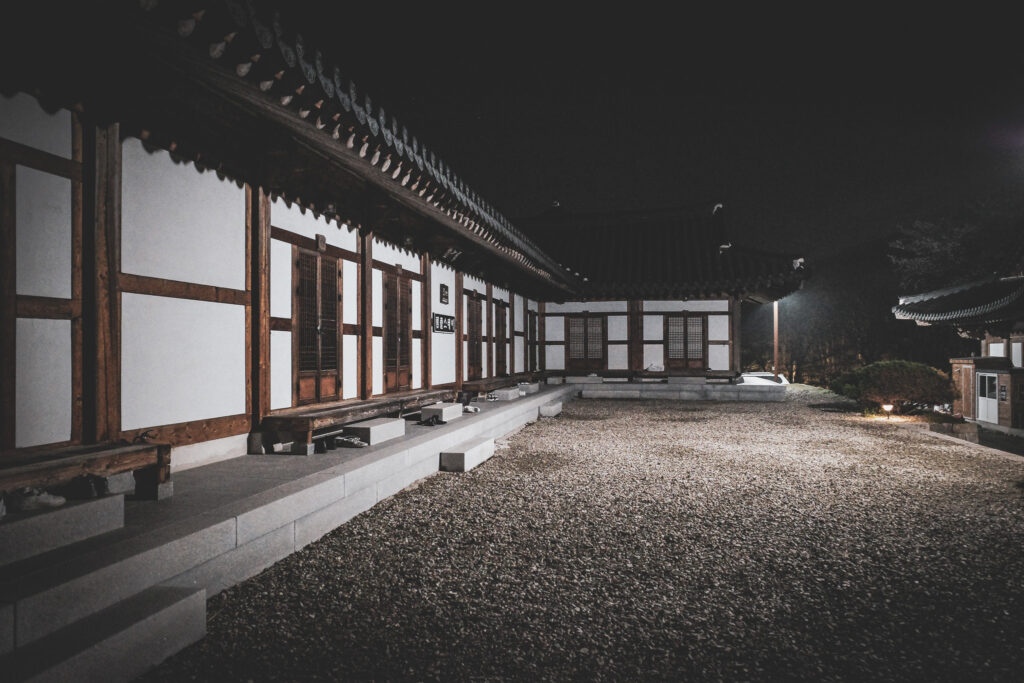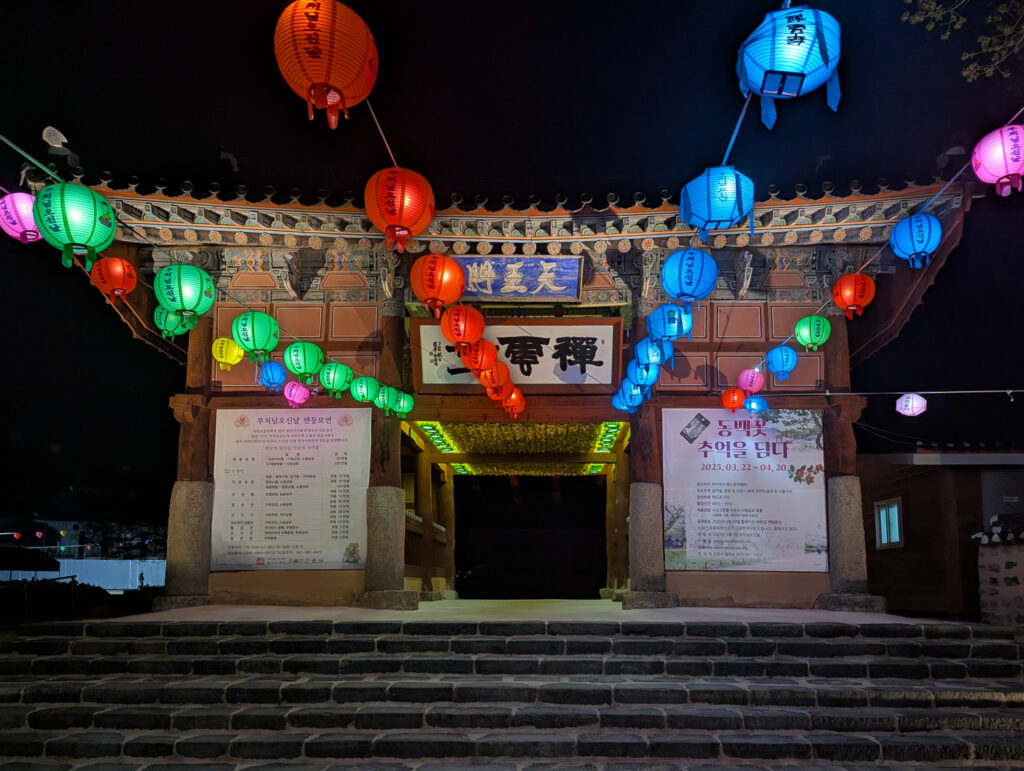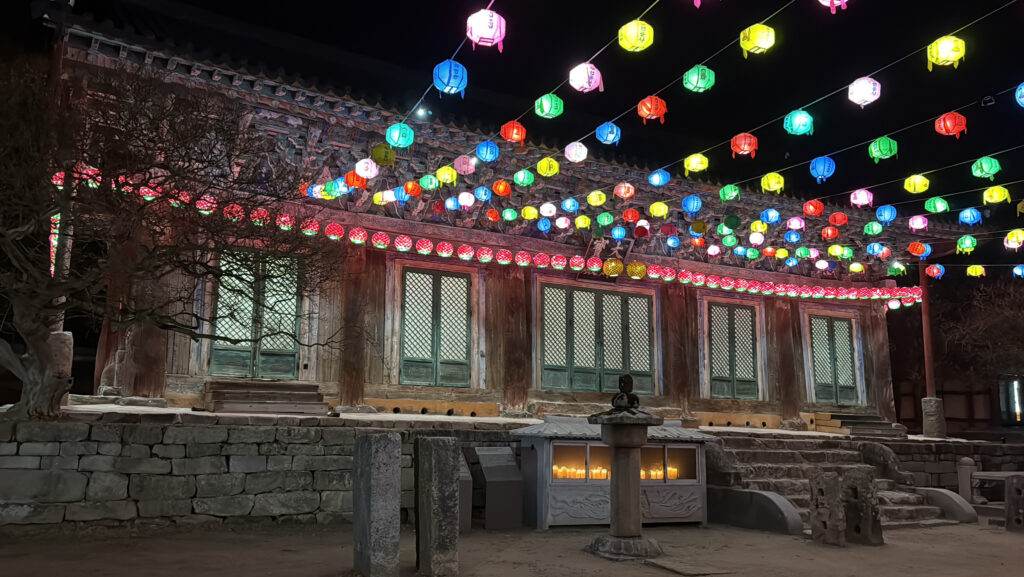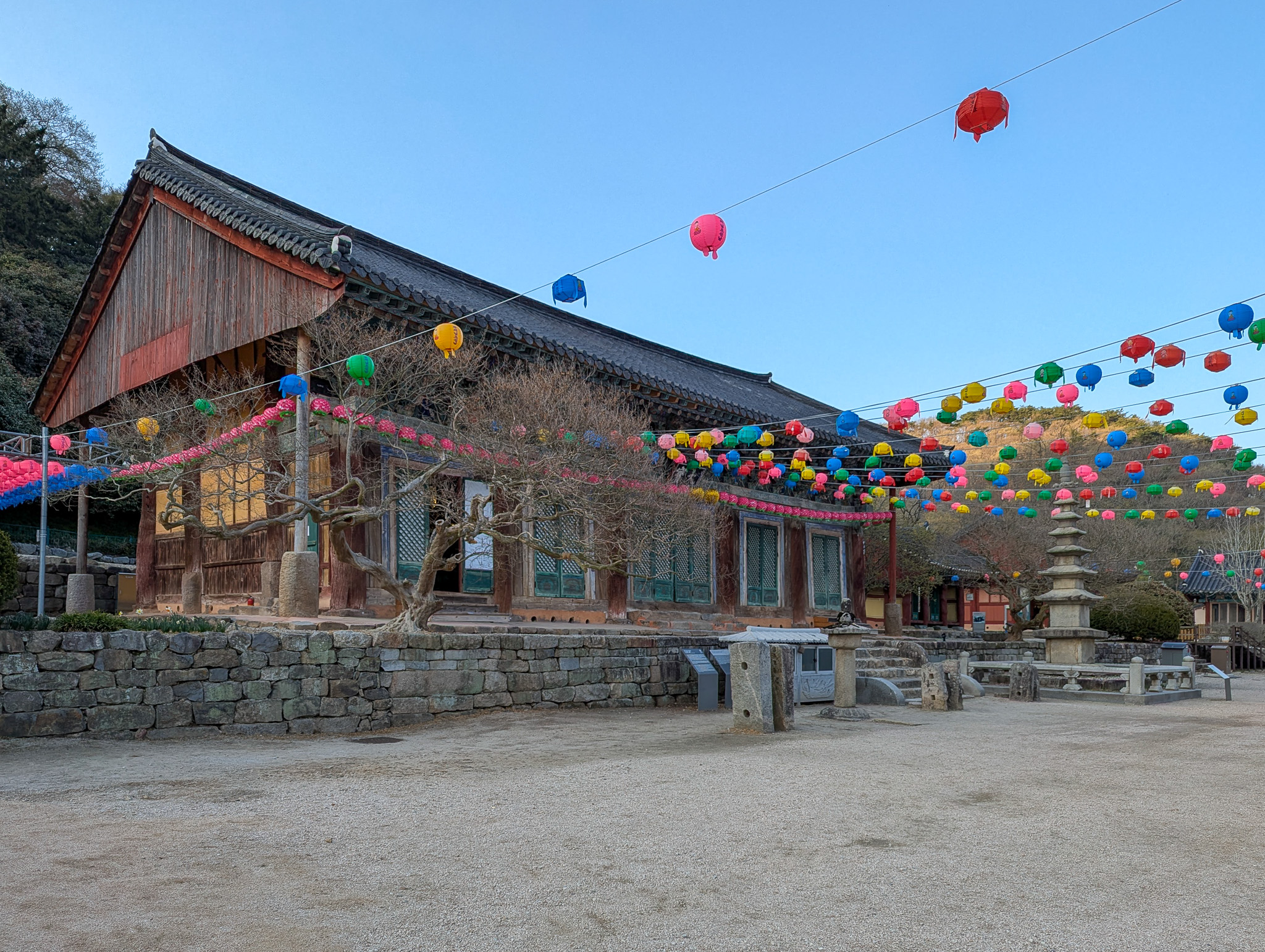The bell rings at 4 AM. There are no lights—only the sound of the bell and the monk banging the wooden bell, which echoes off the trees, the river, the tea trees, and the mountain, resonating into our room. It’s cold outside, but the quiet is soothing. Small lights guide us so we don’t trip over ourselves.

It’s early, but that doesn’t matter. The path from where we sleep to the temple isn’t far; it hugs the river and passes by small tea trees, which will soon be harvested in April for their leaves. A breeze blows, but with plenty of layers, it doesn’t feel cold. The monk walks up and down, banging the wooden fish (목어), a hollow wooden shell that produces a soft bell-like sound when struck, to awaken anyone who wishes to join the morning chanting.
Seonunsa Temple (선운사), known as ‘Taoist Cloud, was established in 577 CE in Gochang, South Korea, is renowned for its 1,500-year-old camellia forest. The temple features important cultural treasures, including the Daeungbojeon Hall and Mokjogwaneum Statue.
I need to cross the stone bridge lined with lanterns for Buddha’s birthday, which is just a few weeks away. The lanterns look beautiful and calming at night when there are barely any people around.

The first gate is known as Cheonwangmun (천왕문), also known as the Gate of the Four Heavenly Guardians. I practice the Hapjang by pressing my palms together, then raising my hands to my chest and making a half-bow to the four wooden sculptures representing the guardians. This act is a sign of respect; the wooden statues are carved to appear fierce, warding off evil and dangerous spirits. They protect the temple and those who enter from harm.
The monks, clad in grey robes and slippers, are walking towards the main hall. I worry about being late but reassure myself that I won’t be.

The main hall of the temple, known as Daeungbojeon (대웅보전), was rebuilt in 1472 after being destroyed in 1592 and again in 1613. This building is considered a national treasure. At night, adorned with lanterns, it is beautiful and calming, just like the rest of the temple. Shoes are removed before entering, as is customary in most temples. I am early and have time to find a spot and sit cross-legged on the floor. There are three Buddha statues in front: the Vairochana Buddha in the middle, representing pure consciousness and universal wisdom. The Amitabha, central in the Buddhism practiced in Korea, is on the left. The Medicine Buddha encourages physical well-being on all is on the right.
As the monks enter the temple through the center door, the banging of the ‘wooden fish’ begins. However, we enter through the left or right doors. The chants, sung in Korean, are rhythmic, though I don’t fully understand the words. My thoughts slow down, allowing me to focus on the present moment. The monks perform ‘full bows,’ the ultimate sign of respect, where they touch the floor with five points of their body (legs, arms, and head) while raising their palms upward to the Buddha. This bow is performed three times or sometimes 108 times, though, in this setting, it is done only a few times. The chanting centers my mind, and worries about the future fade away. Everything that exists is the present moment.
As the service concludes, we walk back into the darkness—alone, yet not.
